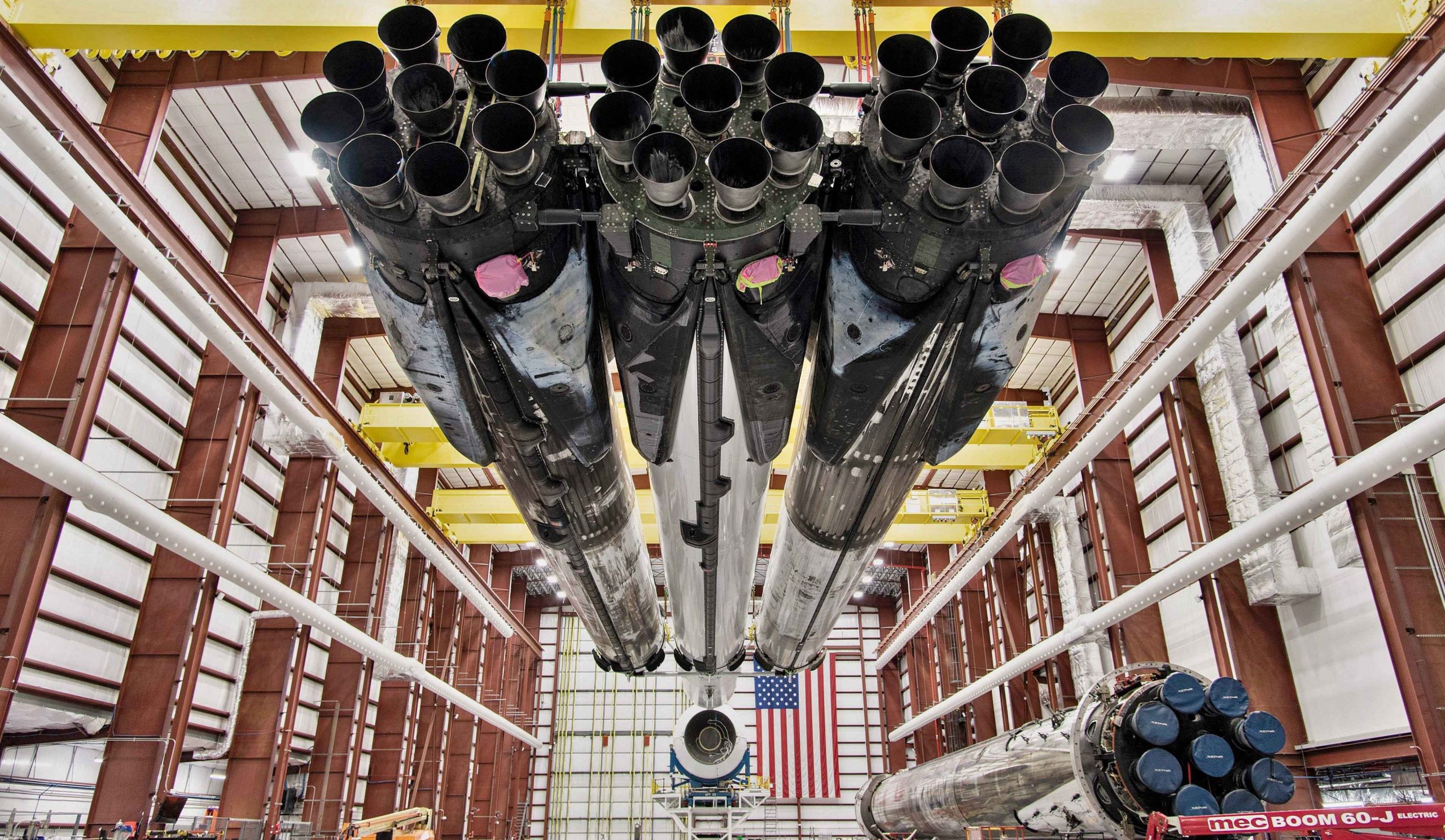
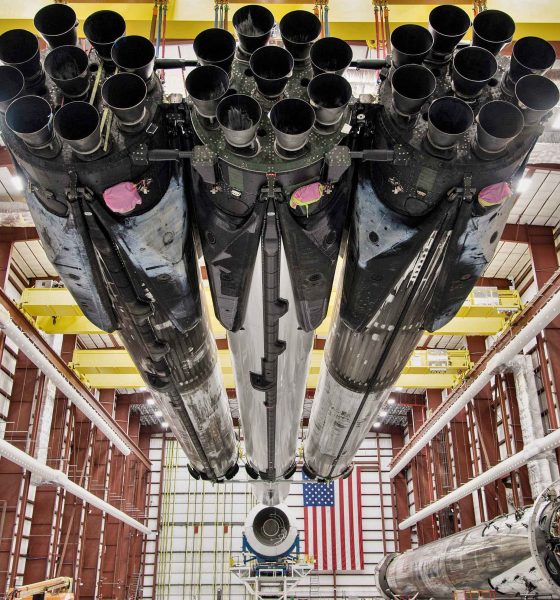
News
SpaceX’s next Falcon Heavy launch on track to carry multiple military satellites
According to one of the US Space Force 44 (USSF-44) mission’s satellite providers, SpaceX’s next Falcon Heavy launch remains on track for late 2020 and will apparently be carrying more than one military satellite to orbit.
Successfully launched just 73 days apart in April and June 2019, SpaceX already has two twice-flown Falcon Heavy side boosters in storage somewhere in Cape Canaveral, Florida, raising the possibility that one or several of the rocket’s next launches could reuse those some boosters. However, NASASpaceflight.com has already confirmed that all three Falcon Heavy Flight 4 boosters will be new, likely representing 25-30%+ of all of SpaceX’s 2020 booster production output.
That also means that publicly-visible Falcon Heavy Flight 4 launch preparations will start much sooner than later as SpaceX works to ship its new boosters from its Hawthorne, California factory to McGregor, Texas for routine acceptance testing and finally to launch facilities in Florida.
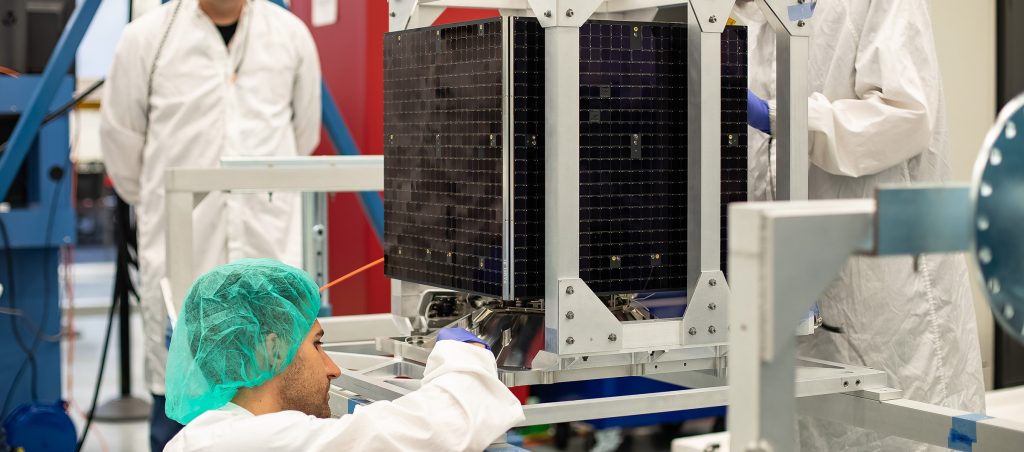
Based on SpaceX’s first Falcon Heavy Block 5 launch, completed on April 11th, 2019, the next rocket’s three new boosters should begin arriving in Florida by mid-2020 – perhaps just a month or two from now. Prior to Arabsat 6A’s commercial Falcon Heavy launch debut, the first of the rocket’s boosters completed acceptance testing in McGregor, Texas and arrived at Kennedy Space Center (KSC) around mid-December 2018 – a bit less than four months before liftoff.
Per NASASpaceflight’s confirmation that all-new boosters are assigned to USSF-44, it’s also true that the mission will mark the second time SpaceX has completed serial production and delivery of a complete Falcon Heavy rocket. With that first-time pathfinder run already behind SpaceX thanks to its April 2019 Arabsat 6A launch, it’s likely that manufacturing and acceptance testing will be much more streamlined, while also reducing the amount of time it will take the rocket to go from Florida arrival to lift-off.
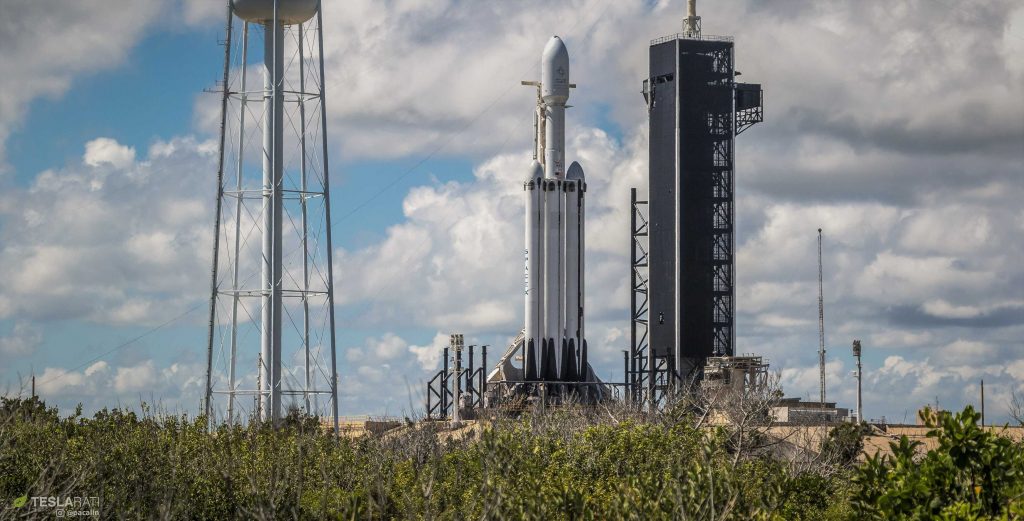
USSF-44 is on track to become SpaceX’s first operational Falcon Heavy launch for the US government some 15-18 months after the company successfully completed STP-2 – a certification test flight for the US Air Force – in June 2019. While some work reportedly remains before SpaceX’s super heavy-lift rocket can be considered fully certified for high-value US military launches, Millenium Space’s April 21st update states that Falcon Heavy’s USSF-44 mission is still on track to “launch in late 2020”.
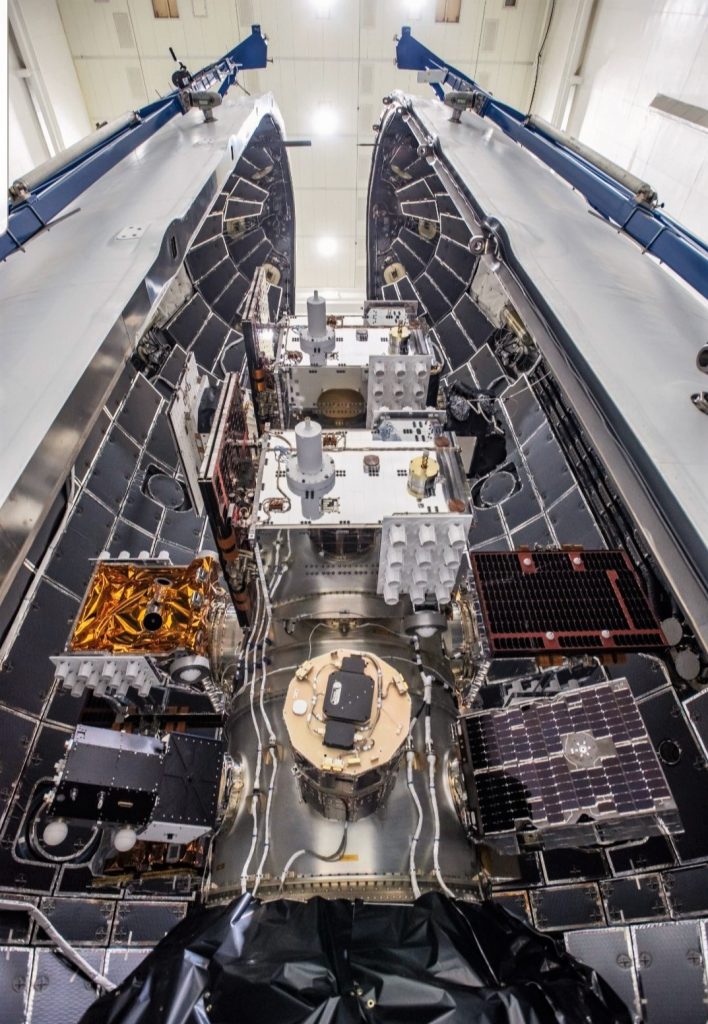
Given that SpaceX is likely in the midst of Falcon Heavy Flight 4 booster production and could begin delivering hardware to Florida just 2-3 months from now, Millenium Space’s comment strongly implies that launch preparations are proceeding smoothly. If SpaceX still needs to complete one or several certification milestones, both it and the US military clearly have a firm plan and are confident that Falcon Heavy can be certified by Q4 2020.
SpaceX also appears to be supporting the US military’s relatively frequent addition of small secondary satellites – often prototypes meant to test new technologies or strategies – on large launches. Whether SpaceX will add secondary dispensers to the rocket’s upper stage or the ~3.7 metric ton (~8200 lb) USSF-44 satellite deploys them itself remains to be seen, but the mission will carry at least one other passenger (TETRA-1). If past US military launches are anything to go by, at least one or two other smaller satellites may also hitch a ride on Falcon Heavy later this year.

News
SpaceX shades airline for seeking contract with Amazon’s Starlink rival

SpaceX employees, including its CEO Elon Musk, shaded American Airlines on social media this past weekend due to the company’s reported talks with Amazon’s Starlink rival, Leo.
Starlink has been adopted by several airlines, including United Airlines, Qatar Airways, Hawaiian Airlines, WestJet, Air France, airBaltic, and others. It has gained notoriety as an extremely solid, dependable, and reliable option for airline travel, as traditional options frequently cause users to lose connection to the internet.
Many airlines have made the switch, while others continue to mull the options available to them. American Airlines is one of them.
A report from Bloomberg indicates the airline is thinking of going with a Starlink rival owned by Amazon, called Leo. It was previously referred to as Project Kuiper.
American CEO Robert Isom said (via Bloomberg):
“While there’s Starlink, there are other low-Earth-orbit satellite opportunities that we can look at. We’re making sure that American is going to have what our customers need.”
Isom also said American has been in touch with Amazon about installing Leo on its aircraft, but he would not reveal the status of any discussions with the company.
The report caught the attention of Michael Nicolls, the Vice President of Starlink Engineering at SpaceX, who said:
“Only fly on airlines with good connectivity… and only one source of good connectivity at the moment…”
CEO Elon Musk replied to Nicolls by stating that American Airlines risks losing “a lot of customers if their connectivity solution fails.”
American Airlines will lose a lot of customers if their connectivity solution fails
— Elon Musk (@elonmusk) December 14, 2025
There are over 8,000 Starlink satellites in orbit currently, offering internet coverage in over 150 countries and territories globally. SpaceX expands its array of satellites nearly every week with launches from California and Florida, aiming to offer internet access to everyone across the globe.
Currently, the company is focusing on expanding into new markets, such as Africa and Asia.
News
Tesla Model Y Standard stuns in new range test, besting its Premium siblings
Tesla’s newer vehicles have continued to meet or exceed their EPA estimates. This is a drastic change, as every 2018-2023 model year Tesla that Edmunds assessed did not meet its range estimates.
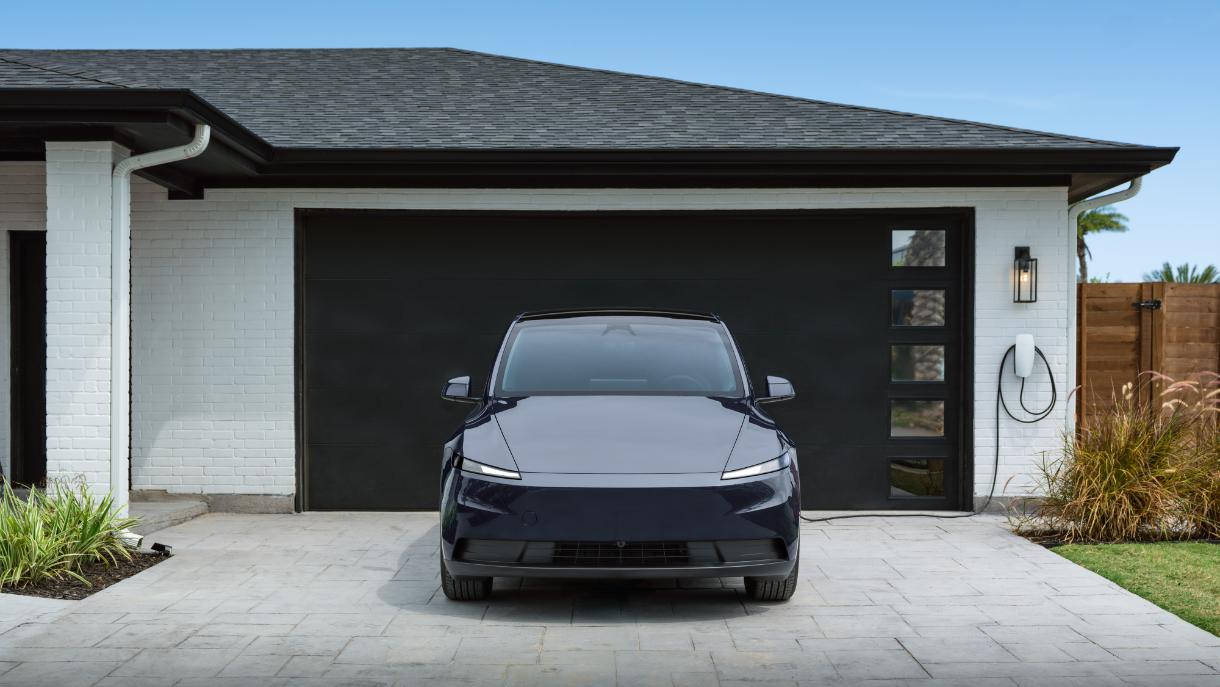
The Tesla Model Y Standard stunned in a new range test performed by automotive media outlet Edmunds, besting all of its Premium siblings that are more expensive and more luxurious in terms of features.
Testing showed the Model Y Standard exceeded its EPA-estimated range rating of 321 miles, as Edmunds said it is the “longest-range Model Y that we’ve ever put on our loop.” In the past, some vehicles have come up short in comparison with EPA ranges; for example, the Model Y’s previous generation vehicle had an EPA-estimated range of 330 miles, but only drove 310.
Additionally, the Launch Series Model Y, the first configuration to be built in the “Juniper” program, landed perfectly on the EPA’s range estimates at 327 miles.
It was also more efficient than Premium offerings, as it utilized just 22.8 kWh to go 100 miles. The Launch Series used 26.8 kWh to travel the same distance.
It is tested using Edmunds’ traditional EV range testing procedure, which follows a strict route of 60 percent city and 40 percent highway driving. The average speed throughout the trip is 40 MPH, and the car is required to stay within 5 MPH of all posted speed limits.
Each car is also put in its most efficient drive setting, and the climate is kept on auto at 72 degrees.
“All of this most accurately represents the real-world driving that owners do day to day,” the publication says.
With this procedure, testing is as consistent as it can get. Of course, there are other factors, like temperature and traffic density. However, one thing is important to note: Tesla’s newer vehicles have continued to meet or exceed their EPA estimates. This is a drastic change, as every 2018-2023 model year Tesla that Edmunds assessed did not meet its range estimates.
Tesla Model Y Standard vs. Tesla Model Y Premium
Tesla’s two Model Y levels both offer a great option for whichever fits your budget. However, when you sit in both cars, you will notice distinct differences between them.
The Premium definitely has a more luxurious feel, while the Standard is stripped of many of the more premium features, like Vegan Leather Interior, acoustic-lined glass, and a better sound system.
You can read our full review of the Model Y Standard below:
Tesla Model Y Standard Full Review: Is it worth the lower price?
News
Xpeng CEO: Tesla FSD 14.2 has developed “near-Level 4” performance
While acknowledging that imperfections remain, the Xpeng CEO said FSD’s current iteration significantly surpasses last year’s capabilities.

Xpeng CEO He Xiaopeng has offered fresh praise for Tesla’s Full Self-Driving (FSD) system after revisiting Silicon Valley more than a year after his first hands-on experience.
Following extended test drives of Tesla vehicles running the latest FSD software, He stated that the system has made major strides, reinforcing his view that Tesla’s approach to autonomy is indeed the proper path towards autonomy.
Tesla FSD closing in on Level 4 driving
During his visit, He test-drove a Tesla equipped with FSD V14.2. He also rode in a Tesla Robotaxi. Over roughly five hours of driving across Silicon Valley and San Francisco, He said both vehicles delivered consistent and reassuring performance, a notable improvement from his experience a year earlier.
According to He, Tesla’s FSD has evolved from a smooth Level 2 advanced driver assistance system into what he described as a “near-Level 4” experience in terms of capabilities. While acknowledging that imperfections remain, the Xpeng CEO said FSD’s current iteration significantly surpasses last year’s capabilities. He also reiterated his belief that Tesla’s strategy of using the same autonomous software and hardware architecture across private vehicles and robotaxis is the right long-term approach, allowing users to bypass intermediate autonomy stages and move closer to Level 4 functionality.
He previously tested Tesla’s FSD V12.3.6 and Waymo vehicles in California in mid-2024, noting at the time that Waymo performed better in dense urban environments like San Francisco, while Tesla excelled in Silicon Valley and on highways.
Xpeng’s ambitious autonomy roadmap and internal challenge
The Silicon Valley visit also served as a benchmark for Xpeng’s own autonomy ambitions. He stated that Xpeng is looking to improve its VLA autonomous driving system to match the performance of Tesla’s FSD V14.2 within China by August 30, 2026. Xpeng is poised to release its VLA 2.0 smart driving software next quarter, though He cautioned that the initial version will not be able to match FSD V14.2’s capabilities, as noted in a CNEV Post report.
He also added a personal twist to the goal, publicly challenging Xpeng’s autonomous driving team. If the performance target is met by the 2026 deadline, the CEO stated that he will approve the creation of a Chinese-style cafeteria for Xpeng’s Silicon Valley team. If not, Liu Xianming, head of Xpeng’s autonomous driving unit, has pledged to run naked across the Golden Gate Bridge, He noted.








